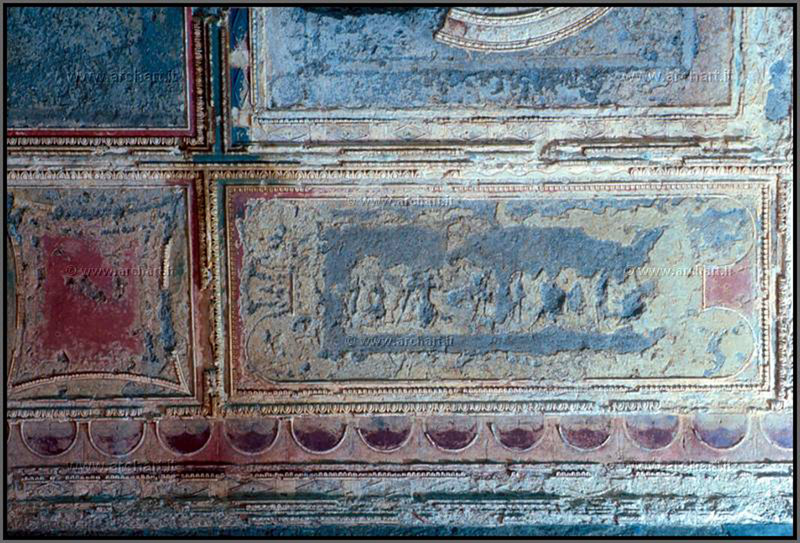

| When I first saw this by photo by Giovanni Lattanzi, I sensed that there was something special about it, but I didn't quite know what, now after re-examining the whole plate 42 issue I have discovered why it is so important. Giovanni Lattanzi has posted two photos of this part of the Volta Dorata fresco, the next is an enlargement |
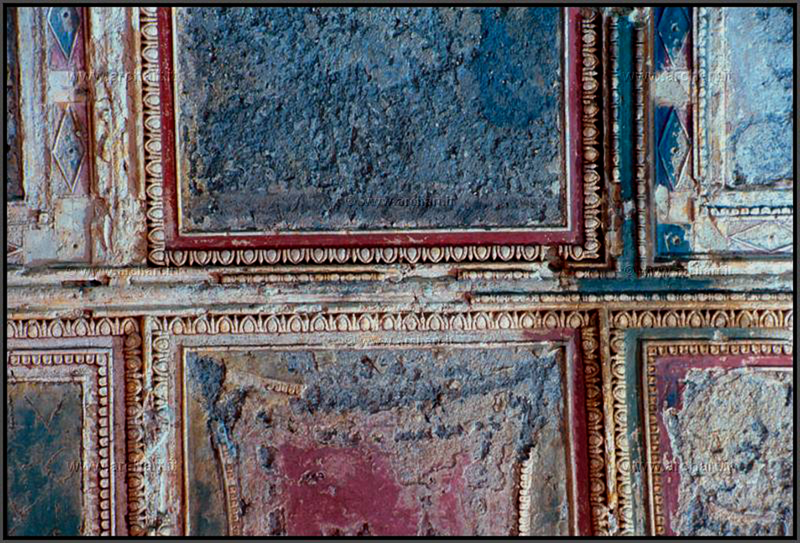
| Here are Virtual picture frames that are nearly 2000 years old! Unfortunately there is no acanthus frieze in this example but anyway very interesting to compare these with the frames that appeared in the 16th century, but first I want to point out something, that many of you may have already noticed. While many of the frescoes seen in the various rooms look almost graffiti like, lack symmetry and perfection in their execution, here we see a stunning mastery and precision in the patterns and detail. Small wonder that Holanda chose this panel for his watercolor. |
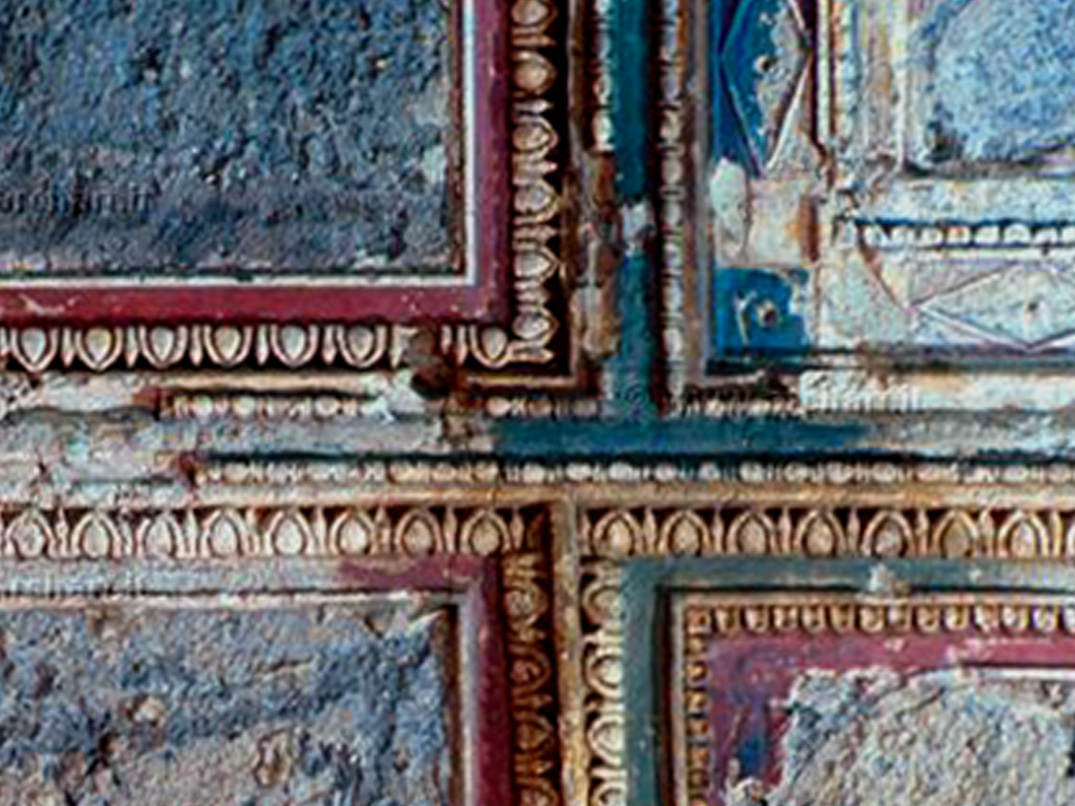
| We can only speculate as to how these patterns were achieved, perhaps with the use of special moulding or even roulettes, Although each technique can usually be identified by joins and overlaps, especially in the corners. Unfortunately the scale is missing here to give us a better idea of the size of this detail. We see here the classical moldings Bead and Reel and Egg and Dart amazing to think that modern homes are still decorated with these mouldings, while they are absolutely in time with the times here in Domus Aurea where they are identical to those of the Pantheon built in the same century |
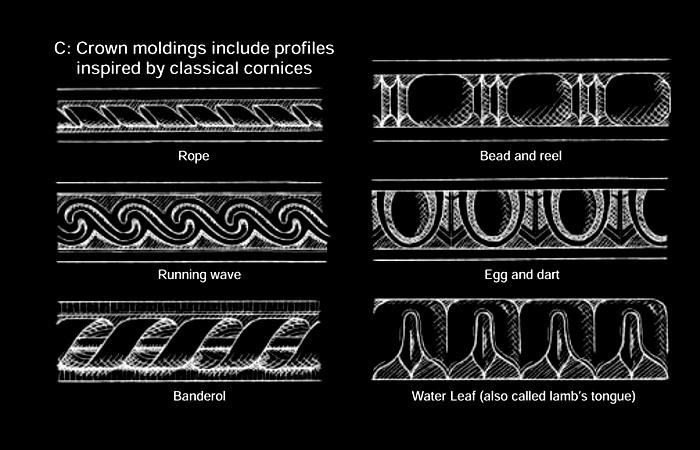

| Now I have to admit to being perhaps a bit overly harsh in stating that some of the decorative details in the 1776 plates of Vestigia delle Terme di Tito e loro interne pitture have been invented, because we see in Comparative Diagram 1, that many details shown in Plate 42 have been faithfully copied. In fact many more decorative details are found in Plate 42 than are shown in Holanda's 1538 Plate. In this regard the most disturbing missing element in Holanda's watercolor is the diamond and square border that surrounds the paintings ringed with a circular decoration. Enlargement of the diamond and square borders reveals that each has been pierced, I suspect that they may have been fitted with gemstones. |
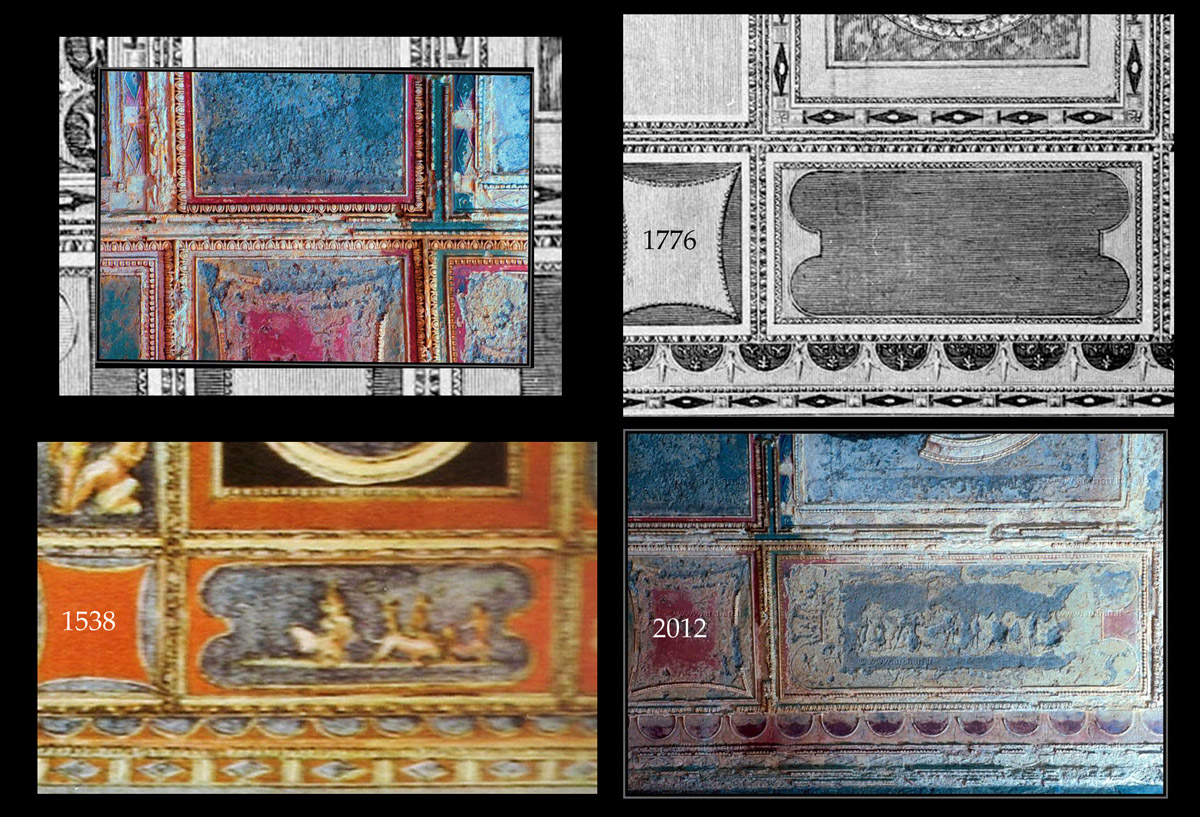

| We can see in the enlarged details shown Comparative Diagram 2, some of the important bead and reel decoration as well as the egg and dart. We can clearly see the diamond and square border, however the diamonds appear larger in the engraving, note the pierced holes indicated by arrow "b", these are small and round while in the engraving they appear large and oval perhaps these are the gemstones that are now missing? There is a strange vine or floral detail (indicated by arrow "a"), that is missing from both the 1538 and 1776 copies of this panel (if it is the same panel...? Look again at the details shown in Comparative Diagram 1, we can see details in Plate 42 that are now only just barely visible in the photograph, I want to direct your attention to the outer border of semi circles bound by a final border of diamonds and squares, this can be seen better in the enlargement. |

| In the enlargement of the photograph in Comparative Diagram 3, we can now see some of the many details shown clearly in Plate 42, yet while there has been such minutious attention to detail, other details such as the final outer border with two rows of beads is missing. This is only one of a number of inexplicable differences. How can these finely detailed panels be so different from each other? On the next page I am going to add scale to these diagrams because without scale it is hard to imagine how difficult it might have been, or not been, to have seen all the details, especially without an Eveready flashlight. |